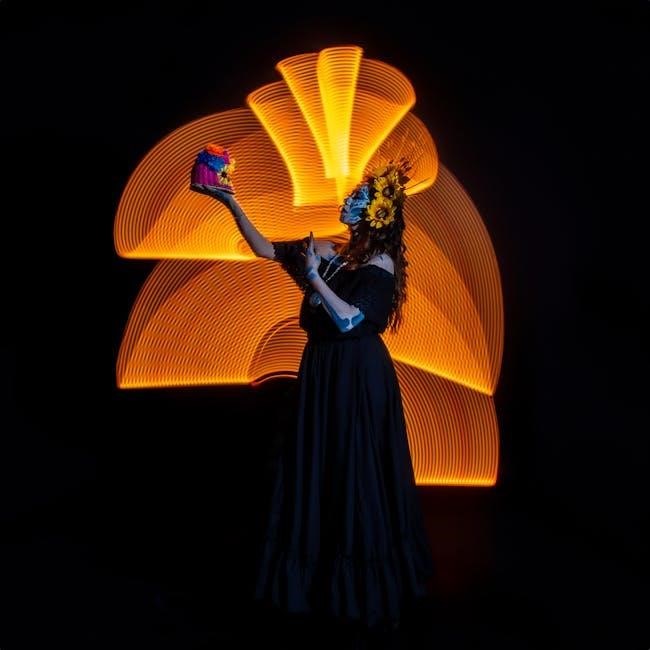“Que Viva La Musica” is a vibrant composition celebrating music’s universal power. Available as sheet music in PDF‚ it offers arrangements for various instruments and ensembles‚ fostering musical education and cultural appreciation.
Overview of the Topic
“Que Viva La Musica” is a dynamic piece celebrating music’s universal appeal. Available as a PDF‚ it provides sheet music for diverse instruments and ensembles‚ enhancing music education and cultural preservation. Platforms like Music Viva and 8notes.com offer free downloads‚ making it accessible for musicians worldwide‚ from beginners to professionals. This resource not only supports learning but also promotes the appreciation of Latin American musical traditions‚ blending traditional elements with modern interpretations to inspire performers and educators alike.
Importance of Sheet Music in Music Education
Sheet music‚ such as “Que Viva La Musica PDF‚” is a cornerstone of music education. It provides a structured foundation for learning‚ enabling students to master complex compositions. By offering precise notation and arrangement details‚ sheet music enhances understanding of rhythm‚ melody‚ and harmony. It also encourages creativity through interpretation‚ fostering deeper musical appreciation. Resources like “Que Viva La Musica” support both individual practice and ensemble performances‚ making it an invaluable tool for educators and learners. Its accessibility in PDF format ensures widespread availability‚ promoting the preservation and dissemination of cultural musical heritage across generations.
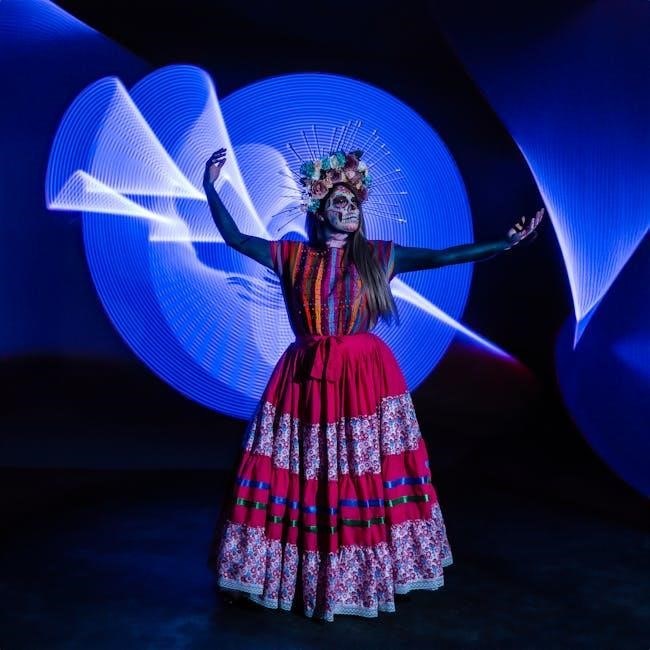
History of “Que Viva La Musica”
“Que Viva La Musica” has roots in Latin American traditions‚ reflecting vibrant cultural heritage. Composed by Mark Weston and influenced by Michael Praetorius‚ it blends traditional rhythms with contemporary arrangements‚ making it a timeless piece celebrated in various performances globally.
Origins and Cultural Significance
“Que Viva La Musica” originates from Latin American music traditions‚ reflecting vibrant cultural heritage. Composed by Mark Weston‚ it blends traditional rhythms with modern arrangements‚ capturing the spirit of musical diversity. The piece has gained global recognition for its ability to unite audiences through its energetic and uplifting melody. Its cultural significance lies in its celebration of Latin American musical roots‚ making it a popular choice for educational and performance settings. The composition is widely admired for its cross-cultural appeal and its role in preserving musical traditions while innovating for contemporary audiences.
Evolution of the Song Over Time
Over the years‚ “Que Viva La Musica” has evolved through various interpretations and arrangements. Initially performed by traditional ensembles‚ it has since been adapted for orchestral and chamber music settings. The integration of modern instruments and digital formats‚ such as PDF sheet music‚ has expanded its accessibility. Collaborations with global musicians have introduced new rhythmic elements‚ enhancing its appeal. This evolution reflects the song’s adaptability while maintaining its cultural essence. Its transformation from a regional piece to an international sensation highlights its enduring relevance and the dynamic nature of musical expression in the digital age.
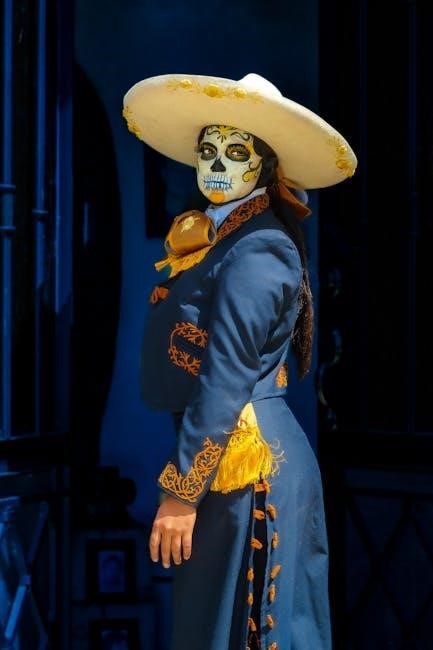
Sheet Music Availability and Formats
“Que Viva La Musica” is widely available in PDF and MIDI formats‚ catering to various instruments and ensembles. Both free and paid options are accessible online.
PDF Downloads for Various Instruments
PDF downloads of “Que Viva La Musica” are accessible for a diverse range of instruments‚ including piano‚ guitar‚ and orchestral arrangements. These downloads provide high-quality sheet music‚ ensuring clarity and precision for musicians. Platforms like Musica Viva and 8notes.com offer these files‚ making it easy for performers to access and print them. The availability of instrument-specific scores allows for versatile performances‚ from soloists to ensembles. Additionally‚ some versions include optional accompaniments‚ such as maracas and claves‚ enhancing the musical experience. This accessibility ensures that the piece can be enjoyed by musicians of all levels and backgrounds.
Free vs. Paid Resources for Musicians
Musicians can access “Que Viva La Musica” through both free and paid resources. Websites like Musica Viva and 8notes.com offer complimentary PDF downloads‚ making the sheet music accessible to everyone. These free resources are ideal for educational purposes and casual performances. However‚ paid options often provide higher quality‚ exclusive arrangements‚ and additional features like accompanying scores or instrumental parts. Platforms may charge for premium downloads‚ ensuring support for composers and arrangers. Balancing accessibility and quality‚ musicians can choose based on their needs‚ whether for personal enjoyment‚ educational use‚ or professional performances. This duality ensures the piece reaches a wide audience while sustaining its artistic value.
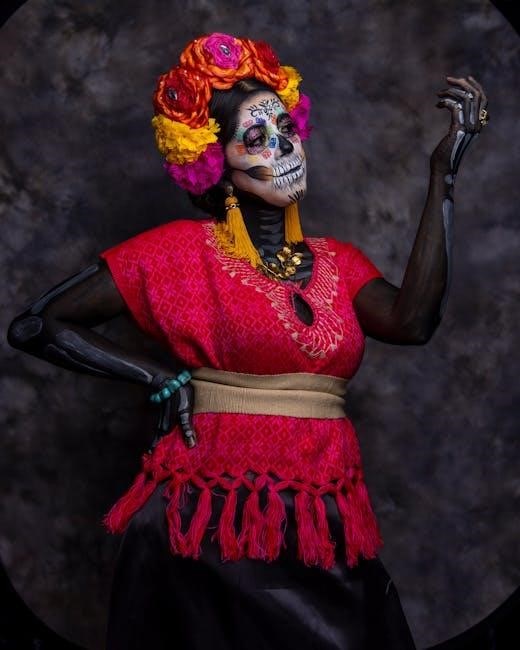
Instruments Featured in “Que Viva La Musica”
“Que Viva La Musica” features a diverse range of instruments‚ including solo violins‚ piano‚ maracas‚ and claves‚ with sheet music available in PDF format.
Orchestral Arrangements and Solos
The orchestral arrangements in “Que Viva La Musica” showcase a rich blend of instruments‚ from bold brass sections to delicate strings. Solo performances‚ particularly for violin and piano‚ highlight the composition’s emotional depth. The sheet music PDFs provide detailed scores for both orchestral ensembles and individual solos‚ making it accessible for musicians of various skill levels. This versatility allows for dynamic interpretations‚ preserving the piece’s cultural essence while encouraging creative expression. With optional maracas and claves‚ the arrangements also incorporate rhythmic elements‚ enhancing the overall musical experience. These features make “Que Viva La Musica” a captivating choice for both performances and educational purposes.
Chamber Music and Ensemble Performances
“Que Viva La Musica” offers rich chamber music arrangements‚ ideal for intimate ensemble performances. The sheet music PDFs cater to various instrument combinations‚ from duets like solo violins to larger ensembles. These arrangements emphasize harmonic balance and rhythmic interplay‚ making them suitable for both professional and amateur musicians. Optional maracas and claves add a vibrant‚ cultural flair‚ while the detailed scores ensure clarity for performers. Musica Viva and similar platforms provide access to these arrangements‚ fostering collaborative musical experiences. Whether for educational workshops or concert performances‚ the chamber music elements of “Que Viva La Musica” inspire creativity and connection among musicians.

Composers and Arrangers
Mark Weston and Michael Praetorius are key contributors‚ with Weston’s energetic compositions and Praetorius’s historical arrangements shaping the musical landscape‚ available as accessible PDF sheet music.
Mark Weston and His Contributions
Mark Weston is a renowned composer and arranger‚ known for his vibrant contributions to “Que Viva La Musica.” His piece‚ “Viva La Musica!”‚ is a lively two-part chorus with piano accompaniment‚ often enhanced by maracas and claves. Weston’s work is celebrated for its energy and rhythmic elements‚ making it a favorite in educational settings and performances. His compositions are widely available in PDF format‚ accessible to musicians worldwide. Weston’s dedication to creating engaging music has made him a significant figure in contemporary musical education‚ inspiring both students and educators with his innovative and culturally rich arrangements.
Michael Praetorius and His Influence
Michael Praetorius‚ a renowned Renaissance composer‚ has left a lasting impact on “Que Viva La Musica” through his arrangements. His piece‚ “Viva la musica‚” arranged for three guitars in A Major‚ showcases his mastery of polyphonic composition. Praetorius’s influence is evident in the work’s intricate harmonies and rhythmic complexity. His contributions to the piece highlight the cultural richness of early European music traditions. Available in PDF format‚ his arrangement allows modern musicians to explore his timeless creativity. Praetorius’s legacy continues to inspire performers and educators‚ bridging the gap between historical and contemporary musical practices.

Popular Platforms for Sheet Music
Music Viva and 8notes.com offer “Que Viva La Musica” sheet music PDF downloads‚ providing free and paid resources for various instruments and arrangements.
Music Viva and Its Role
Music Viva is a leading platform offering free sheet music downloads‚ including “Que Viva La Musica” in PDF format. It provides arrangements for various instruments‚ from orchestral to chamber music‚ catering to both professionals and enthusiasts. The platform emphasizes cultural and educational enrichment‚ making classical and contemporary works accessible. Music Viva also features scenes from composers’ lives‚ such as Rossini‚ and hosts concerts for diverse instrumental ensembles. Its extensive archive supports music education globally‚ encouraging performers to explore rich musical traditions. With collaborations with renowned orchestras and composers like Mark Weston‚ Music Viva remains a vital resource for musicians seeking high-quality sheet music.
8notes.com and Other Online Archives
8notes.com is a prominent online platform offering free sheet music‚ including “Que Viva La Musica” arrangements for instruments like flute and piano. It provides a user-friendly interface for downloading PDF and MIDI files‚ catering to musicians of all levels. Other archives‚ such as Scribd and Total Choir Resources‚ also host “Viva La Musica” PDFs‚ featuring compositions by Mark Weston and Michael Praetorius. These platforms ensure accessibility to diverse musical works‚ supporting both educational and performance needs. By offering a wide range of formats and genres‚ they foster a vibrant community of musicians and educators dedicated to preserving and sharing musical heritage.
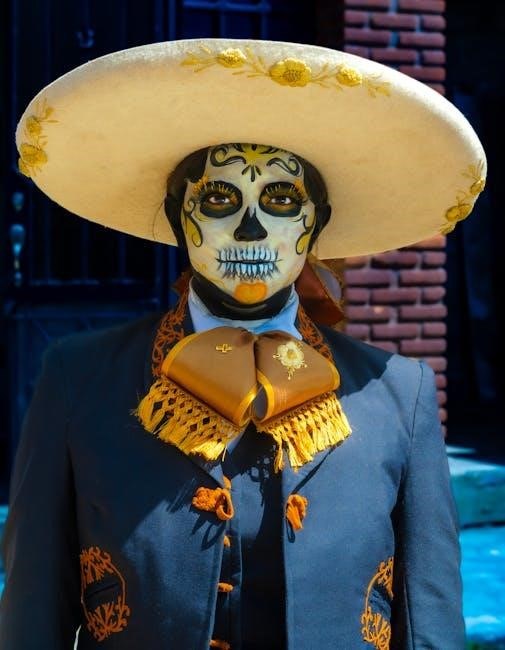
Performance and Interpretation
The composition’s versatility shines in various performances‚ from solo piano renditions to full orchestral arrangements‚ each interpretation capturing the lively spirit of Latin American music traditions.
Choral Arrangements and Vocal Ranges
The choral arrangements of “Que Viva La Musica” are designed for two-part choruses‚ offering accessible yet dynamic vocal ranges. Composed by Mark Weston‚ the piece features energetic rhythms and optional maracas and claves‚ enhancing its lively spirit. Vocal ranges are carefully structured to suit diverse choral groups‚ ensuring inclusivity and engagement. The arrangements also highlight the cultural richness of Latin American music traditions‚ blending traditional and contemporary elements. With adaptable scoring‚ the work caters to both beginner and advanced ensembles‚ making it a versatile choice for performances. Its vibrant energy and rhythmic elements create a captivating experience for singers and audiences alike.
Piano Accompaniments and Rhythmic Elements
The piano accompaniments in “Que Viva La Musica” provide a dynamic foundation‚ enhancing the piece’s rhythmic energy. Optional maracas and claves add vibrant percussion‚ creating a festive atmosphere. The interplay between piano and vocals or instruments is balanced‚ ensuring the melody remains prominent. Rhythmic elements are central to the composition‚ reflecting Latin American musical influences. The piano’s rhythmic patterns drive the music forward‚ complementing the choral or instrumental parts. This blend of piano accompaniment and percussive elements results in a lively‚ engaging performance‚ making “Que Viva La Musica” a standout choice for musicians and ensembles seeking to celebrate musical vitality and cultural richness.
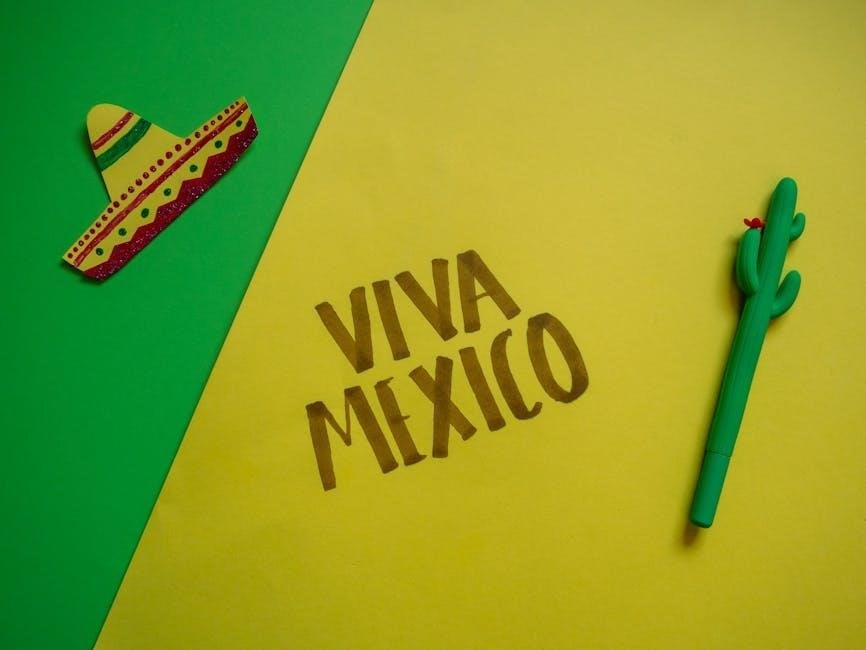
Educational Resources
“Que Viva La Musica PDF” offers valuable educational resources‚ including workshops‚ creative labs‚ and teaching materials‚ supporting music educators and students in exploring Latin American musical traditions effectively.
Workshops and Creative Labs
Workshops and creative labs centered around “Que Viva La Musica PDF” provide interactive learning experiences for musicians and educators. These sessions focus on exploring the cultural and historical context of the music‚ offering practical exercises and collaborative projects. Participants delve into Latin American musical traditions‚ gaining insights into rhythm‚ melody‚ and instrumentation. Expert facilitators guide attendees through compositions‚ emphasizing interpretation and performance techniques. These labs also encourage innovation‚ allowing participants to adapt and reinterpret the music for modern audiences. By combining theory with practice‚ workshops foster a deeper appreciation and mastery of “Que Viva La Musica‚” making it accessible to diverse musical backgrounds.
Teaching Materials for Music Educators
Teaching materials for “Que Viva La Musica PDF” are designed to support music educators in delivering engaging and culturally rich lessons. These resources include detailed sheet music‚ guides for instrumental and choral arrangements‚ and interactive activities tailored for classroom use. Educators can access workshops‚ lesson plans‚ and multimedia tools to enhance student learning. The materials emphasize Latin American musical traditions‚ providing historical context and practical exercises. Additionally‚ adaptable arrangements cater to diverse skill levels‚ from beginners to advanced students. These resources empower educators to foster creativity‚ technical proficiency‚ and cultural appreciation among their pupils‚ making “Que Viva La Musica” a valuable addition to music curricula worldwide.

Cultural and Historical Context
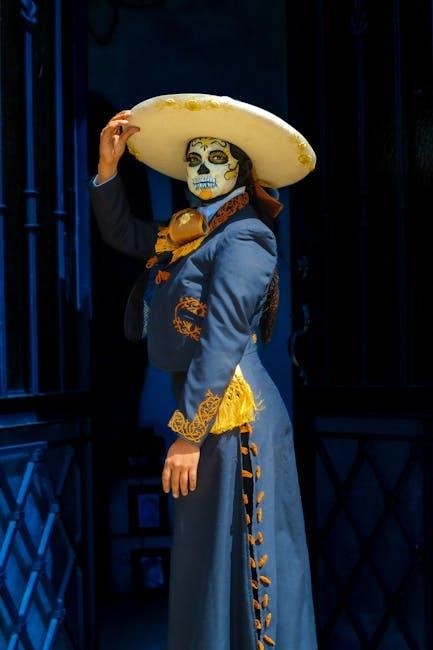
“Que Viva La Musica” reflects rich Latin American musical traditions‚ blending vibrant rhythms and melodies. Its cultural depth and historical significance make it a timeless celebration of musical heritage.
Latin American Music Traditions
“Que Viva La Musica” embodies the vibrant spirit of Latin American music‚ blending indigenous‚ African‚ and European influences. Its rhythmic patterns and melodic richness reflect the region’s cultural diversity. The use of instruments like maracas and claves highlights traditional percussion elements. Composers such as Mark Weston have drawn inspiration from these traditions‚ creating works that resonate with historical and contemporary Latin American musical identities. The piece often features in community celebrations‚ showcasing music’s role in storytelling and cultural unity. This tradition fosters a deep connection to heritage‚ making “Que Viva La Musica” a celebration of Latin America’s enduring musical legacy.
Modern Adaptations and Performances
Modern adaptations of “Que Viva La Musica” have breathed new life into the classic piece. Musicians and ensembles worldwide incorporate contemporary styles‚ blending traditional Latin rhythms with modern genres like jazz and pop. Digital platforms have enabled global sharing‚ with sheet music PDFs available for diverse instruments‚ from orchestral arrangements to solo performances. Collaborations between artists and digital platforms have further expanded its reach‚ allowing for innovative interpretations. Festivals and concerts now feature fresh renditions‚ appealing to both traditional and new audiences. This evolution ensures the piece remains relevant‚ connecting past and present through music‚ while maintaining its cultural essence and energy.
